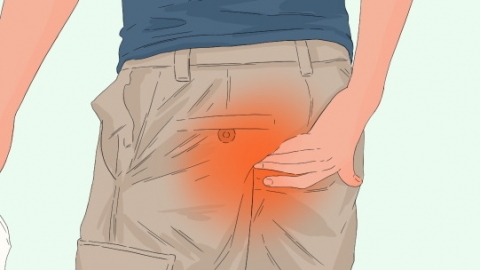How to relieve hemorrhoidal congestion and swelling
In general, congestion and swelling of hemorrhoids may be caused by prolonged sitting or standing, dietary irritation, thrombosed external hemorrhoids, inflammatory external hemorrhoids, or prolapsed and incarcerated internal hemorrhoids. Patients can choose appropriate measures based on their specific conditions. Detailed analysis is as follows:

1. Prolonged Sitting or Standing
Remaining in the same position for extended periods obstructs venous return around the anus, leading to blood accumulation and resulting in hemorrhoidal congestion and swelling. It is recommended to get up and move regularly—take a 5-minute break every hour of sitting or standing. Performing regular anal sphincter exercises (Kegel exercises) can also help promote blood circulation in the anal area.
2. Dietary Irritation
Excessive consumption of spicy foods can irritate the anal mucosa and blood vessels, causing vasodilation, congestion, and subsequent edema. Adjust the diet to include mild, non-irritating foods; increase intake of fiber-rich foods such as celery and apples, drink plenty of water, and avoid irritants like chili peppers and Sichuan pepper.
3. Thrombosed External Hemorrhoids
A blood clot forms within the hemorrhoidal venous plexus, blocking blood return and causing sudden congestion, swelling, and severe pain. Under medical guidance, medications such as micronized purified flavonoid fraction tablets, diosmin tablets, or ibuprofen sustained-release capsules may be taken. In severe cases, surgical excision of the thrombosed external hemorrhoid may be required.
4. Inflammatory External Hemorrhoids
An infection causes inflammation in the hemorrhoid tissue, increasing vascular permeability and resulting in congestion and swelling. Under medical supervision, antibiotics such as cefuroxime axetil tablets, levofloxacin hydrochloride tablets, or metronidazole tablets may be prescribed. Additionally, sitz baths with potassium permanganate solution can be used to alleviate symptoms.
5. Prolapsed and Incarcerated Internal Hemorrhoids
When an internal hemorrhoid protrudes and cannot be reduced, the anal sphincter muscle contracts and traps the hemorrhoid, obstructing venous return and causing congestion and swelling. Immediately perform warm sitz baths and gently push the hemorrhoid back into place. If this is ineffective, hemorrhoid ligation surgery may be necessary. After treatment, avoid straining during bowel movements.
Maintain regular bowel habits in daily life and avoid prolonged squatting during defecation. Keep the anal area clean and wipe with warm water after bowel movements. Wear loose, breathable underwear to minimize friction and irritation. If congestion and swelling recur frequently or worsen, seek medical attention promptly to prevent further progression of the condition.





